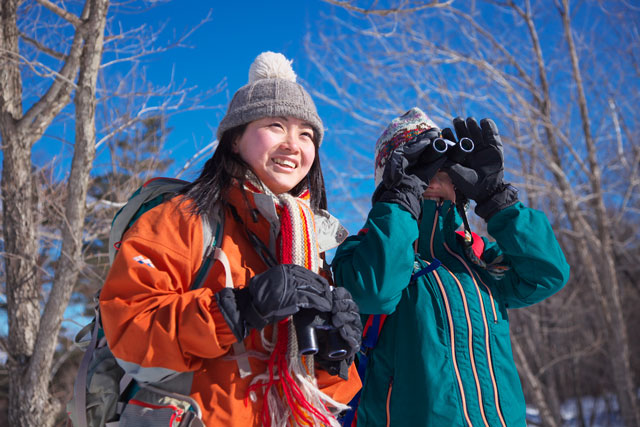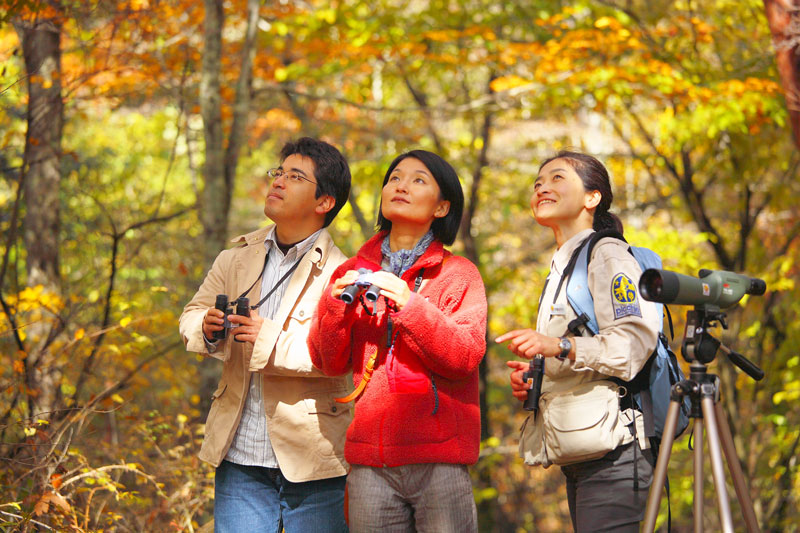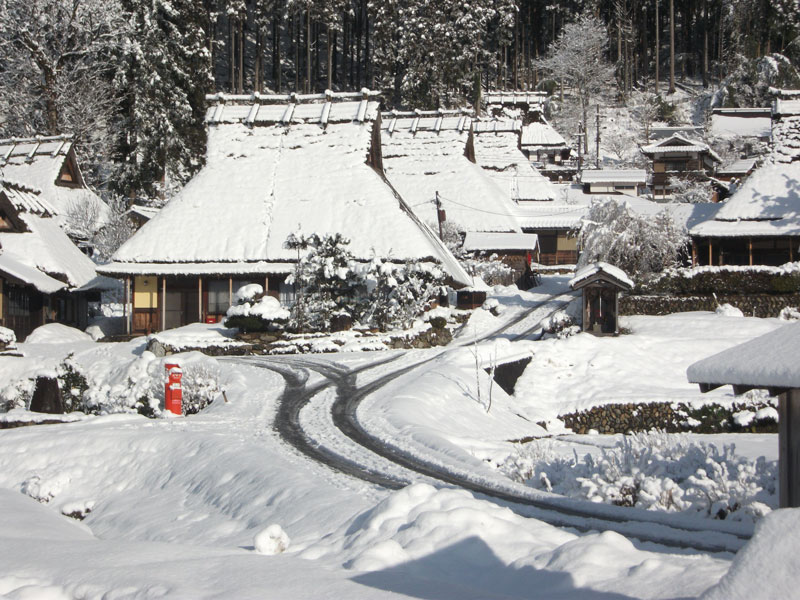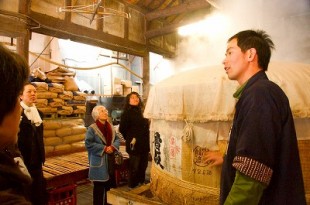If you’re living in Tokyo or its environs, green isn’t a color you see too much of—unless it’s neon generated. And being good to the environment in the great big metropolis Tokyoites call home is an uphill task.
By Andy Gayler
It’s just one big burping greedypants when it comes to natural resources: think of all those hardworking air conditioners keeping you cool during the hot summer months, the bright billboards that make up the night landscape of the city’s most populous and popular neighborhoods, or even that simple local convenience store burning the midnight oil (and some) so you can get a bento at 1 am—what are you doing up so late, anyway?)
You see, Tokyo doesn’t really do eco-friendly. It can’t. It won’t. But there are some ways you can rebalance your world a little. Take a break. But, do it in a way that makes a lighter impact on the world around you, or as it’s now known, ecotourism.
You may ask, perhaps understandably, just what ecotourism means. Well, in Japan it’s a bit of a catch-all that can be tricky to pin down. Some enterprising bods out there are just using the title as a great marketing ploy to hook gullible do-gooders but are, in fact, offering little to nothing different from mainstream tour operators. However, the more honest, genuinely well-meaning folk out there are easy to find and they provide everything from leisurely nature walks (see the Karuizawa bird sanctuary tour) to adventure sports for adrenalin junkies.
Much of what goes under the ecotourism banner in Japan is either about protecting the natural world or, and possibly more significantly, rejuvenating rural communities—the two go hand in hand on many of the tours here—and by doing the latter successfully you also address the larger environmental issues.
In Japan there are a number of organizations, such as the Japanese Ecotourism Society (JES) and Ecotourism Japan (EJ)—non-profit organizations that work as “portals” to various eco-activities run by small outfits throughout the country. These will often involve guides, some who speak English, and have an educational bent, teaching you about the history, culture and ecology of an area. Most of these tours pride themselves on sourcing locally, be it the guide who takes you around, the food you eat, or the accommodation where you stay—which may well be a traditional, and very old, Japanese home run by the same family that has been living there for generations. In addition, these tours patronize other local businesses and support social projects, which in turn bolster efforts at sustaining or revitalizing rural communities.
This movement began in the 1970s, with the realization that the pull to the big cities was stripping the countryside of its younger generations, and thereby taking away future farmers and others whose work and lifestyle were closely linked to maintaining the natural environment. This led to the well-documented death of agricultural communities, but also to a decline in natural habitats, aggravated by deforestation and illegal dumping, and ultimately the health of the nation due to depleted water resources, an increased reliance on imports and even further pollution.
Today there are many successful programs, often supported by the government (some of them are free of charge as long as you take part in a survey), that you can join for anything from a couple of hours to a number of nights. And they also take place all over the country—yes, even in Tokyo (see the river tour)—so you can find something to suit not only your budget, but also the free time you have available. And the good news for the tourist is you will get to see a Japan that’s more traditional, feel genuinely closer to rural communities and have a unique experience to reflect on and remember. As for the would-be-ecotourist, well, you’ll be treading lightly enough to leave only a small ecological footprint—and have the chance to provide direct support, money, and possibly, if you opt for some volunteering, a bit of your own labor where it’s most needed.
The following are a few options for ecotourism experiences around Japan—many of them are located close enough to Tokyo to make for a day or weekend trip.
Satoyama in Hida, Gifu
Activity: Cycling and hiking
Time: 2.5–5 hours | Cost: ¥4,500–9,000 Satoyama are where mountains meet cultivated land, and this tour is a good way to see a more traditional rural lifestyle. A guide (English and Japanese speakers are both available) will lead you on bikes and talk about the environment, history, culture and customs of the local communities.
Web: http://ecotourism.jp/en/ecotour/chubu/gifu001.html
Activity: Nature watching
Time: 2 hours+ | Cost: ¥1,000
Again you’ll have to make your way there, but with a chance to see flying squirrels it’s got to be worth it. The tour is Japanese only but interpreters can be organized.
Web: http://ecotourism.jp/en/ecotour/chubu/nagano001.html
Tokyo rivers, Tokyo
Activity: Nature watching
Time: 2–4 hours | Cost: ¥5,000–6,000
A great way to see the city you think you know so well. Tokyo, or Edo as it was, used to depend on its waterways to get people and goods around and there’s much to still be seen from that era. The tour is offered only in Japanese.
Web: www.enjoy-eco.or.jp
Miyama and Miyazu, Kyoto
Activity: Experience traditional rural life
Time: 1–2 days | Cost: ¥7,000
A visit to satoyama and a chance to feel the pace of an older Japanese lifestyle. Go during the winter to taste the seasonal food and experience the beautiful snow landscape. Also a monitor tour, so numbers are limited.
Web: www.ecotourism-center.jp/article.php/ngttesttour1_en
Activity: Visit sake makers
Time: 1 day (Jan 15) | Cost: Free
A chance to visit a 300-year-old “fermentation” town and see sake being made. Book ahead, as this is a monitor tour that takes place only one day out of the year.
Web: www.ecotourism-center.jp/article.php/ngttesttour1_en
Southern Alps, Yamanashi
Activity: Foothills tour
Time: 1–2 days (Nov. 22–23) | Cost: Free
This is known as a monitor: promoted by the government, it gives a limited number of foreigners a free visit as long as they answer questionnaires. This one will take you to a fertility festival in a beautiful mountain setting.
Web: www.ecotourism-center.jp/article.php/ngttesttour1_en













